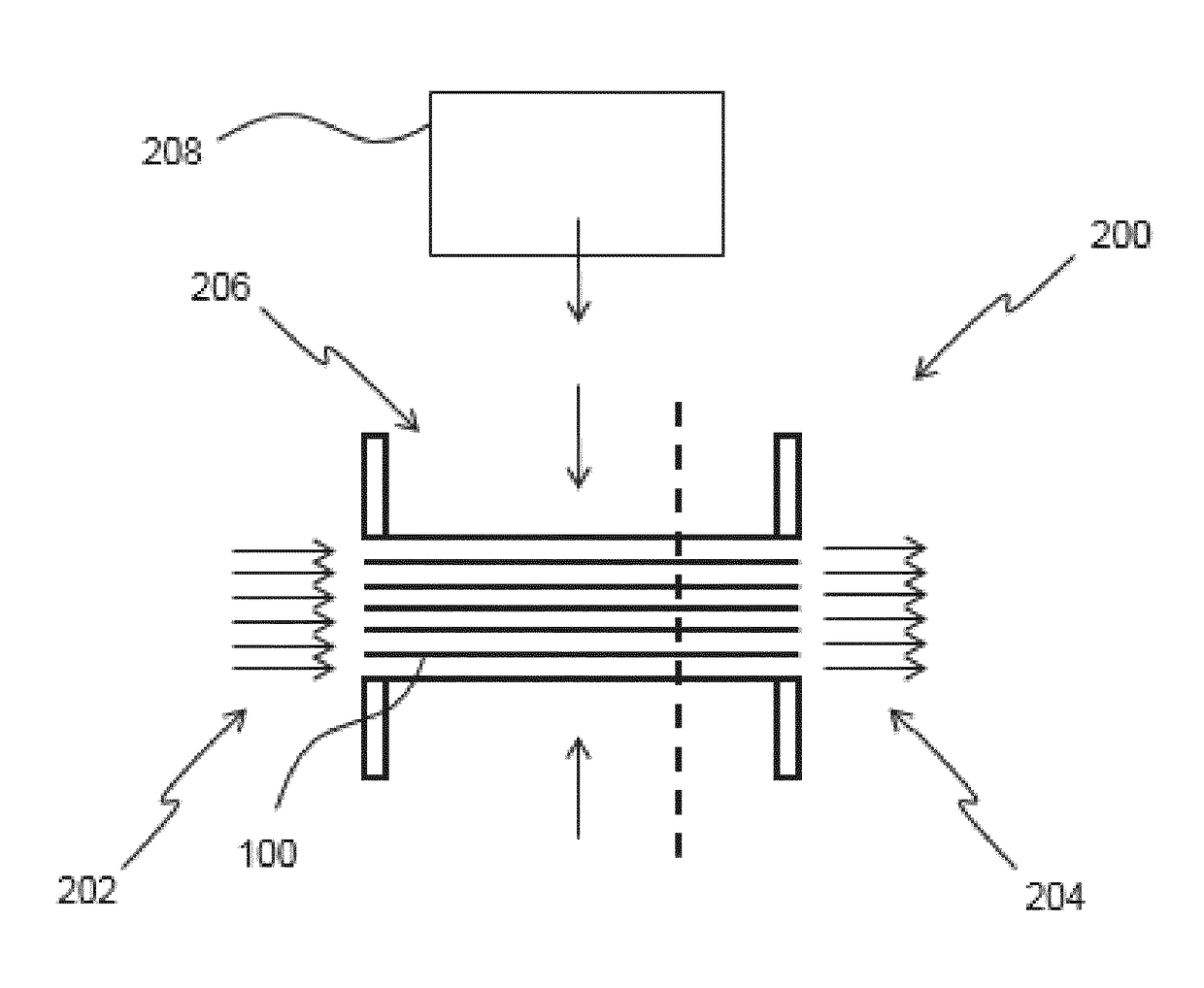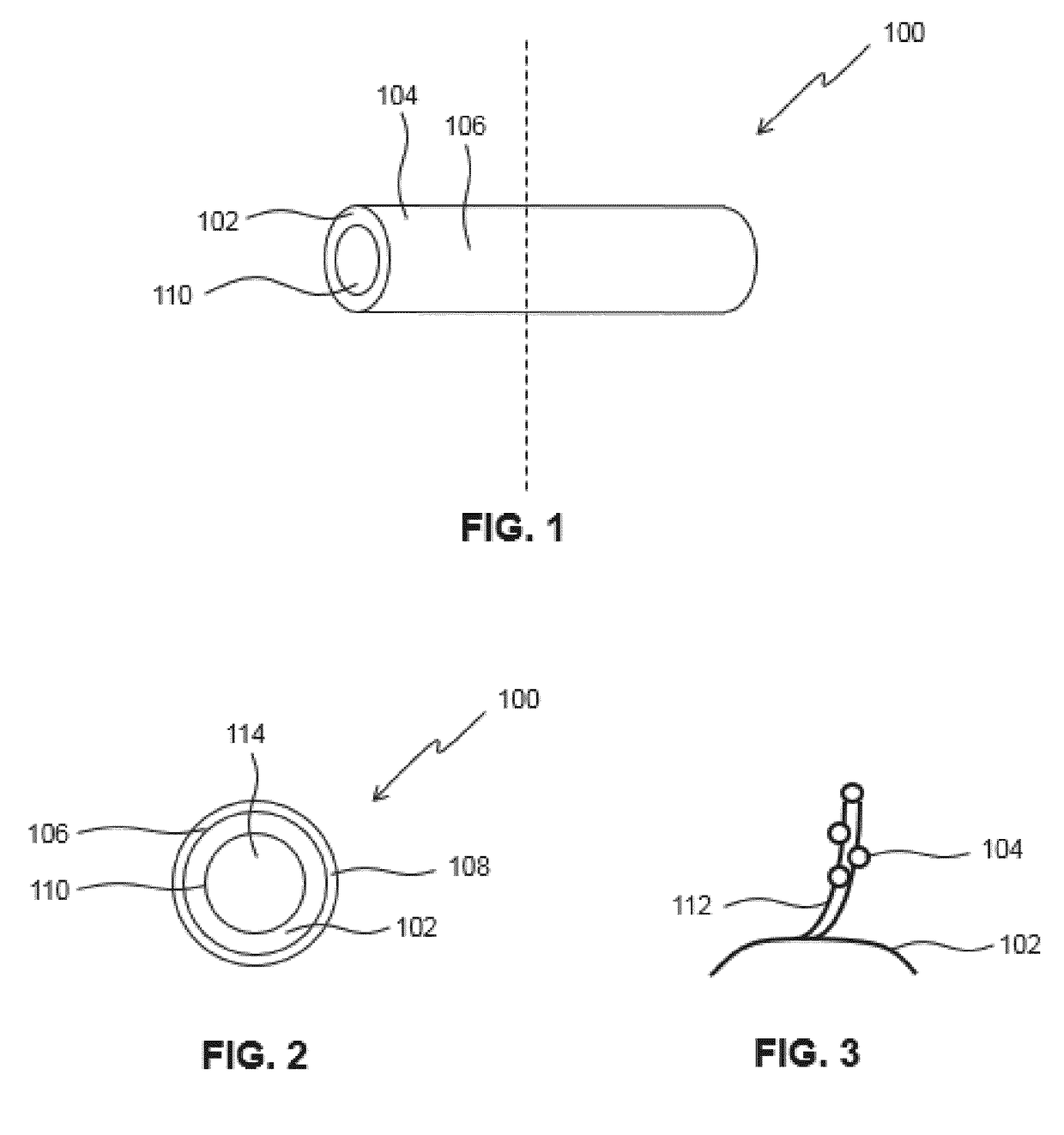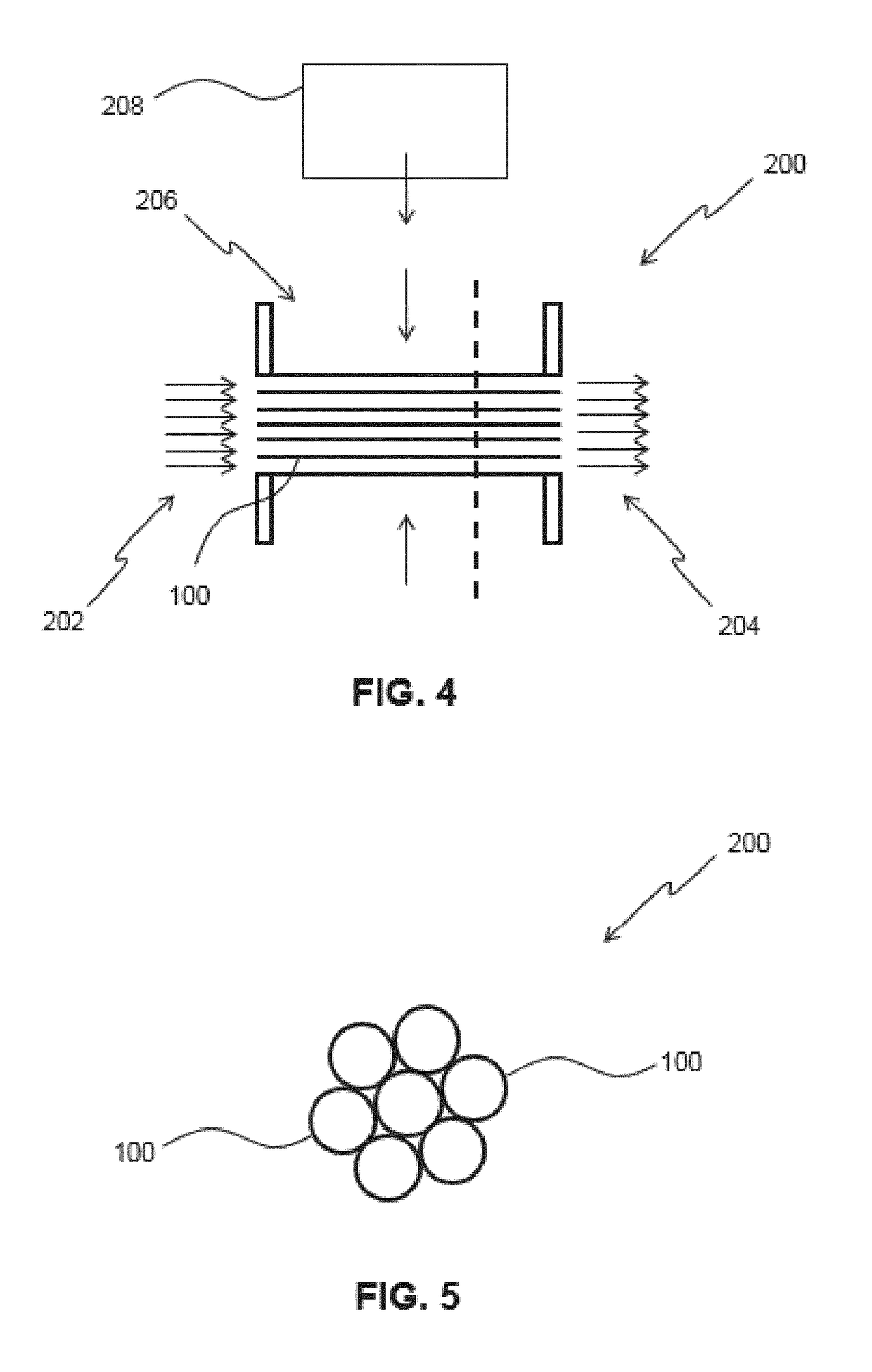Water purification catalyst, water purifier, beverage maker and method
- Summary
- Abstract
- Description
- Claims
- Application Information
AI Technical Summary
Benefits of technology
Problems solved by technology
Method used
Image
Examples
example 1
Catalyst Element Manufacturing Example 1
[0124]HF alumina material supplied by HyFlux CEPAparation Technologies Europe, InnoCep-N-800 was used and a Ni carbon growth catalyst was incorporated using the following process steps:
[0125]A hollow alumina fiber without any previous treatment was immersed in a Ni nitrate solution (0.5 mg / 80 ml). The Ni nitrate solution was adjusted to pH=3.5 using a diluted nitric acid (concentration 1%). In order to precipitate the Ni onto the alumina, 20 ml of a concentrated urea solution (1.06 g / 20 ml) was added dropwise to begin precipitation of the Ni. The temperature was then adjusted to and kept at 100° C. to bring about decomposition of the urea. After 2 h of deposition time, the sample was rinsed with Type 1 ultrapure water in accordance with ISO 3696 (Milli Q water as provided by the Millipore Corporation) and dried for 2 h at 80° C. under vacuum.
[0126]CNFs were then incorporated into the catalyst element by flushing the catalyst element with ethyl...
example 2
Catalyst Element Manufacturing Example 2
[0131]The catalyst element manufacturing example 2 is that same as the catalyst element manufacturing example 1, except as follows. In this example the noble metal precursor Pd acetylacetone (6 mg per ml) was used. The deposition time was 17 h in toluene. After the impregnation the catalyst element was dried under vacuum at 80 C for 2 h. The first surface was subsequently coated with a PDMS layer having a thickness of between 5 and 150 μm by a dip coating method as used in example 1 to yield the noble metal-impregnated catalyst element.
example 3
Catalyst Element Manufacturing Example 3
[0132]A catalyst element as obtained by catalyst element manufacturing example 1 was modified by adding Cu to the material comprising the noble metal to form a bimetallic catalyst. The copper was incorporated using a reduction step, however other alternative methods of incorporating copper or other non-noble metals will be apparent to the skilled person. The catalyst element with a Pd noble metal material was immersed in a water solution containing a copper nitrate salt. H2 was bubbled through the water solution for 24 h (although other reducing agents known to the skilled person could be used, such as formic acid). The copper was reduced at the surface of the Pd creating a good contact between both metals (Pd and Cu). Subsequently the catalyst element was dried for 2 h at 80° C., calcined and reduced and the first surface was subsequently coated with a PDMS layer having a thickness of between 5 and 150 μm by a dip coating method as used in ex...
PUM
| Property | Measurement | Unit |
|---|---|---|
| Wavelength | aaaaa | aaaaa |
| Wavelength | aaaaa | aaaaa |
| Flow rate | aaaaa | aaaaa |
Abstract
Description
Claims
Application Information
 Login to View More
Login to View More - R&D
- Intellectual Property
- Life Sciences
- Materials
- Tech Scout
- Unparalleled Data Quality
- Higher Quality Content
- 60% Fewer Hallucinations
Browse by: Latest US Patents, China's latest patents, Technical Efficacy Thesaurus, Application Domain, Technology Topic, Popular Technical Reports.
© 2025 PatSnap. All rights reserved.Legal|Privacy policy|Modern Slavery Act Transparency Statement|Sitemap|About US| Contact US: help@patsnap.com



